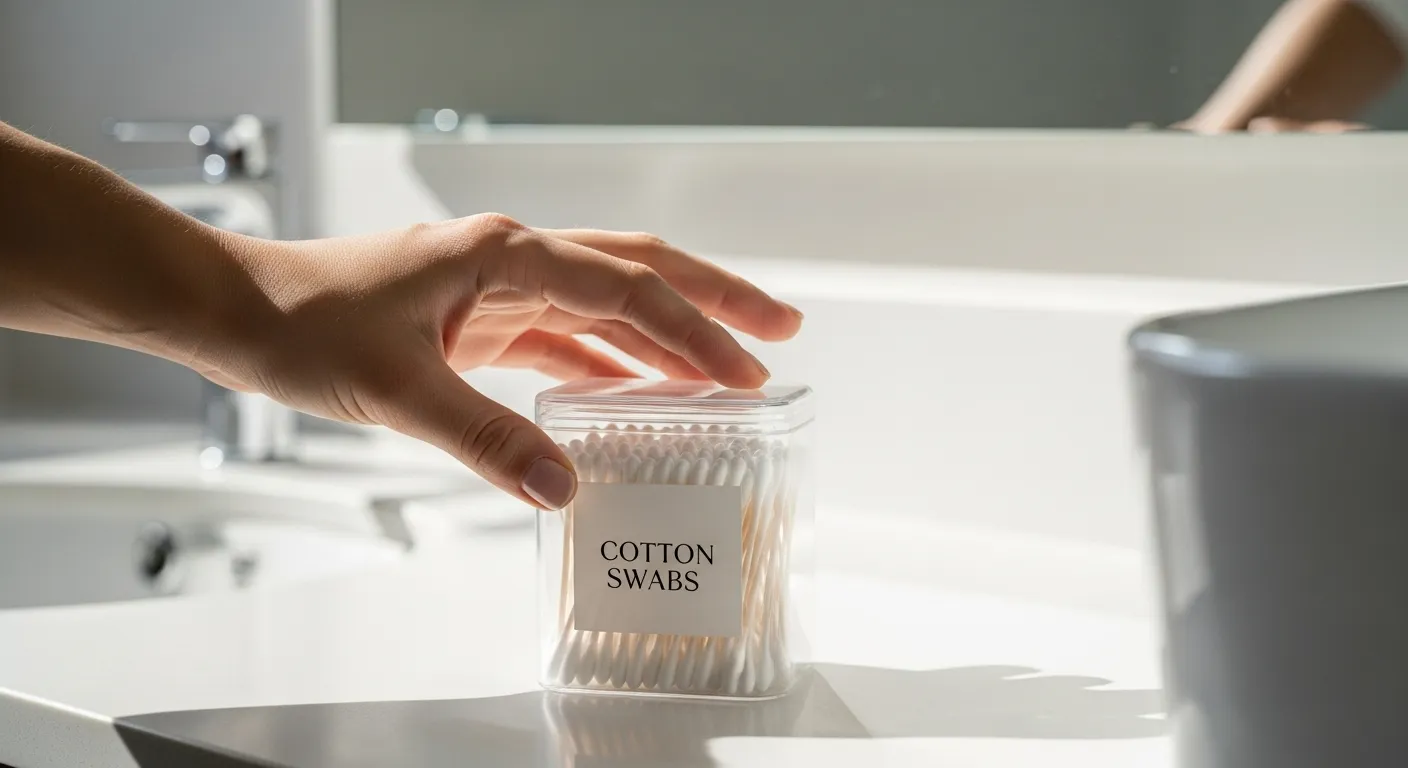
Step 3: Label Everything for Effortless Access
If containment gives everything a home, labeling puts a street sign on it. This step may seem fussy, but it is the single most important action you can take to make your new system last. Labels transform your storage from a memory game into an intuitive map. You’ll never have to pull out three bins to find the cotton swabs again.
For safety and accessibility, labeling is non-negotiable. In an emergency, you need to be able to find first-aid supplies instantly. For those with changing eyesight, large-print, high-contrast labels are a powerful tool for maintaining independence and safety. Imagine trying to distinguish between two similar-looking bottles without your glasses—a clear label solves the problem instantly.
You don’t need a fancy machine, though they are helpful. Here are a few simple methods:
Label Maker: A simple handheld label maker is a great investment for any home organizing project. Use a large font size and a simple, bold style. Black text on a white or clear background is the most readable.
Waterproof Stickers or Chalk Labels: You can buy pre-made labels and write on them with a permanent or chalk marker. This is a great option for baskets and bins.
Paint Pen: For plastic or glass containers, a white or black paint pen can be used to write directly on the surface for a clean, permanent label.
Masking Tape and a Marker: The simplest method of all! A strip of painter’s tape or masking tape and a clear, bold marker works perfectly well. It’s not fancy, but it is effective and easy to change if you reorganize.
What and How to Label
Be clear and specific, but not so specific that the label becomes obsolete if you switch brands. Group items by their function. Good examples of labels include:
- First Aid: For bandages, antiseptic wipes, and ointments.
- Dental Care: For toothpaste, floss, and mouthwash.
- Eye Care: For contact lens solution and eye drops.
- Skin Care – Face: For cleansers and moisturizers.
- Skin Care – Body: For lotions and sunscreens.
- Hair Tools: For your hair dryer, brushes, and combs.
- Extra Linens: For guest towels and washcloths.
- Back Stock: For unopened duplicates of your daily use items.
Label the outside of every bin, basket, and drawer. For stacked containers, make sure the label is on the front edge and clearly visible. Don’t forget to label shelves, too. A small label on the edge of a shelf in the medicine cabinet helps everyone in the house put things back in the right spot.
For a next-level organization hack, you can even put a “map” on the inside of a cabinet door. This small chart can list the contents of each shelf or bin, making it even easier to find what you need at a glance.


















4 Responses
How do I make my small bathroom more efficient Where is the answer?
Where is the article?
Click on the article scroll down and you will see numbers 1 thru 10 click on numbers and you get your answers. Hope this helps! Have a great day!
Are you actually going to provide the information or id this some kind of scam?